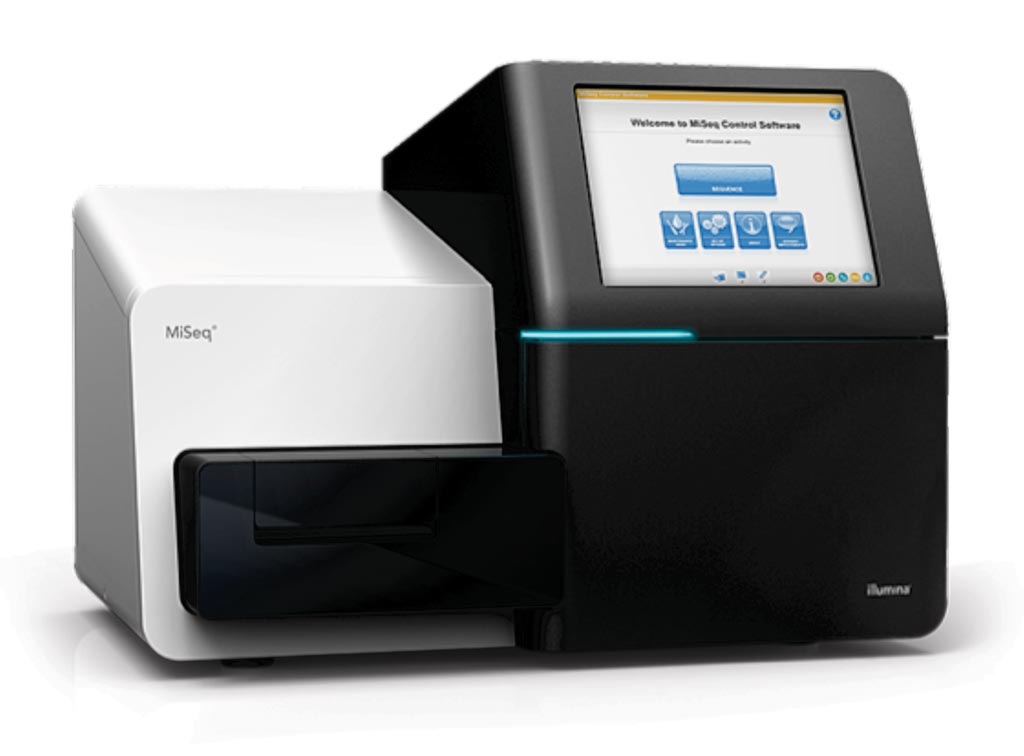Next-Generation Sequencing Identifies Monogenic Diabetes
By LabMedica International staff writers
Posted on 23 Jul 2019
Monogenic diabetes is seen mainly in maturity onset diabetes of the young (MODY), and accounts for 1%–2% of all diabetes cases. In adults, monogenic diabetes is difficult to distinguish from common diabetes causes.Posted on 23 Jul 2019
The diagnosis of monogenic diabetes is an example of precision medicine because it conveys specificities as regards the severity and the course of hyperglycemia, the risk of diabetes complications, the need for diabetes treatment and its modalities, the presence of associated features, and the management of affected women during pregnancy.

Image: The MiSeq System: access focused applications such as targeted resequencing, metagenomics, small genome sequencing, targeted gene expression profiling (Photo courtesy of Illumina).
Medical Geneticists at the Pitié-Salpêtrière Hospital (Paris, France) and their colleagues included in a cross-sectional study 1,564 probands who were recruited from 116 Endocrinology departments throughout France. Inclusion criteria were the absence of diabetes autoantibodies, and at least two of the three following criteria: an age ≤ 40 years and a body mass index (BMI) < 30 kg/m2 at diagnosis in the proband or in at least two relatives with diabetes, and a family history of diabetes in ≥ 2 generations.
Genetic testing was carried out in two steps. The first one was the targeted Next-Generation Sequencing (NGS) based on a multiplex polymerase chain reaction assay, the SureMODY-MASTR assay. The coding regions ± 30 bp of seven genes (GCK, HNF1A, HNF4A, HNF1B, ABCC8, KCNJ11, and INS) and the minimal promoter region of HNF1A, HNF4A, and INS were amplified, and multiplex libraries were subsequently pooled and run on a MiSeq instrument.
The scientists reported that pathogenic variants were identified in 254 patients (16.2%) and in 23.2% of EuroCaucasian patients. Using more stringent selection criteria (family history of diabetes in ≥ 3 generations, age at diabetes ≤ 40 years and BMI < 30 kg/m2 in the proband, EuroCaucasian origin) increased the diagnosis rate to 43%, but with 70% of the identified cases being missed. GCK (44%), HNF1A (33%), and HNF4A (10%) accounted for the majority of the cases. HNF1B (6%), ABCC8/KCNJ11 (4.4%), and INS (2.8%) variants accounted for 13% of the cases.
As compared to non-monogenic cases, a younger age, a lower BMI and the absence of diabetes symptoms at diagnosis, a EuroCaucasian origin, and a family history of diabetes in ≥ 3 generations were associated with monogenic diabetes, but with wide phenotype overlaps between the two groups. In the total population, two clusters were identified, that mainly differed by the severity of diabetes at onset. Monogenic diabetes was more prevalent in the milder phenotypic cluster. The phenotypes of the 59 patients (3.8%) with variants of uncertain significance were different from that of patients with pathogenic variants, but not from that of non-monogenic patients.
The authors concluded that variants of HNF1B and the K-ATP channel genes were more frequently involved in monogenic diabetes than previously reported. Phenotype overlapping makes the diagnosis of monogenic diabetes difficult in adolescents/adults and underlies the benefit of NGS in clinically selected patients. The study was published on July 11, 2019, in the journal BMC Medicine.
Related Links:
Pitié-Salpêtrière Hospital








 (3) (1).png)





